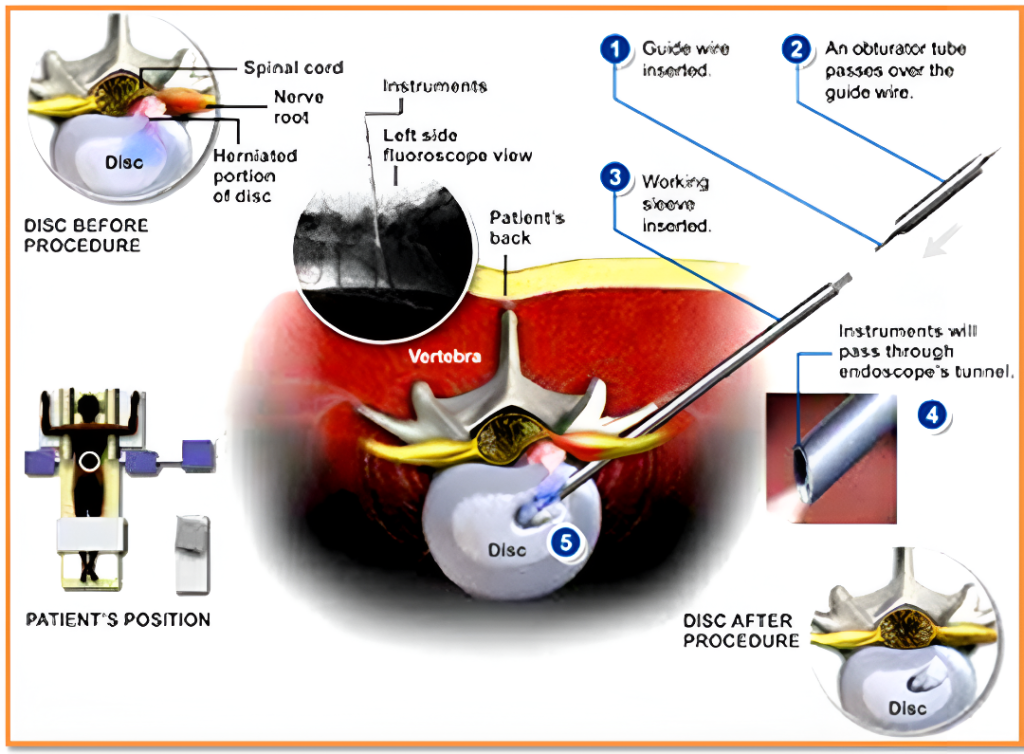

How is Endoscopic Spine Surgery Performed?
-
The surgeon makes a small incision (about 1 cm).
-
An endoscope, a thin tube with a camera, is inserted through the incision.
-
The surgeon uses live images from the camera to guide tiny instruments and treat the affected area.
-
Since there is no need for large cuts or muscle damage, the surgery is less painful and recovery is quicker.

Benefits of Endoscopic Spine Surgery
-
Minimal Pain: Smaller incisions cause less tissue damage, resulting in less pain after surgery.
-
Faster Recovery: Patients can often return to daily activities within a few weeks.
-
Reduced Scarring: The tiny incisions leave minimal marks.
-
Shorter Hospital Stay: Most patients go home the same day or the next day.
-
Safer Approach: There is a lower risk of complications compared to traditional open surgeries
Who Can Benefit from Endoscopic Spine Surgery?
This surgery is suitable for patients with:
-
Herniated or slipped discs.
-
Spinal stenosis (narrowing of the spine).
-
Sciatica or nerve pain caused by pinched nerves.
-
Degenerative disc disease.
-
Some spine injuries or infections.
Recovery After Endoscopic Spine Surgery
-
Patients usually walk within a few hours of the procedure.
-
Most can return to light activities in 1-2 weeks and resume work in about 4-6 weeks.
-
Regular follow-ups with the surgeon ensure proper healing and recovery.


